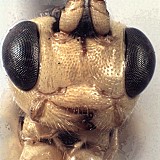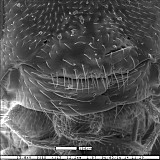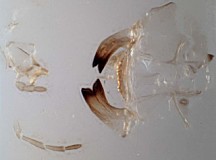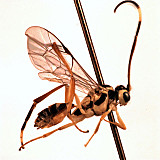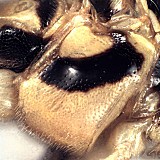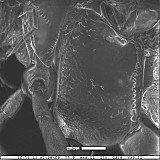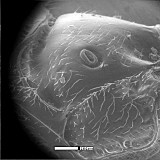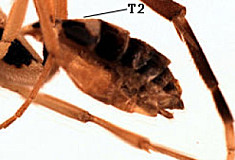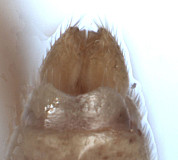Physotarsus concavus Zhaurova, 2009
Physotarsus concavus is one of several species with a black and yellow mesosoma, a distinctly punctate mesopleuron, and a sparsely to impunctate mesoscutum. It is nearly identical to P. cordatus, P. emarginatus, and P. truncatus, but differs from these in the possession of distinctly pale middle tarsomeres on the hind leg. The subapical ring on the flagellum is also more distinct in P. concavus.
Physotarsus concavus is very similar in color to P. emarginatus, and to a lesser extent P. cordatus. The hind tarsi are darker in P. emarginatus and the dorsoposterior corner of the mesopleuron is black, while in P. cordatus the hind legs and metasoma are more extensively orange. Physotarsus concavus differs from both of these species in the more shallowly concave male subgenital plate (Fig. 9).
There are no specimens currently determined for this OTU, or those specimens determined for this OTU are not yet mappable.
This material is based upon work supported by the National Science Foundation under Grant Number DEB 0328922 with REU supplement DEB 0723663.
Any opinions, findings, and conclusions or recommendations expressed in this material are those of the author(s) and do not necessarily reflect the views of the National Science Foundation.

